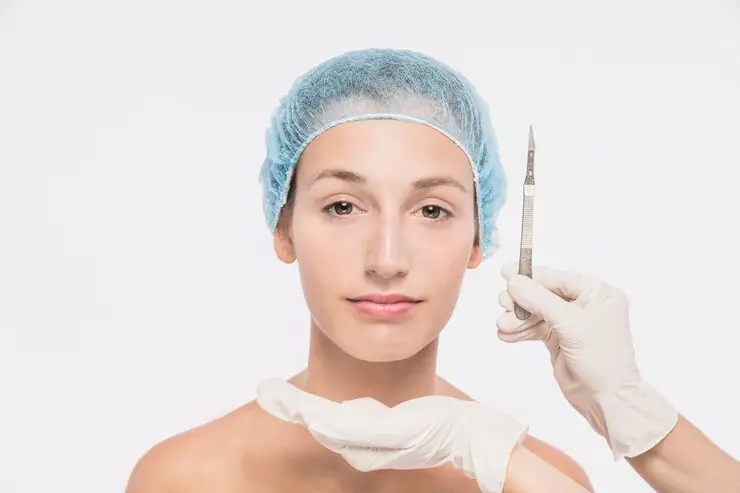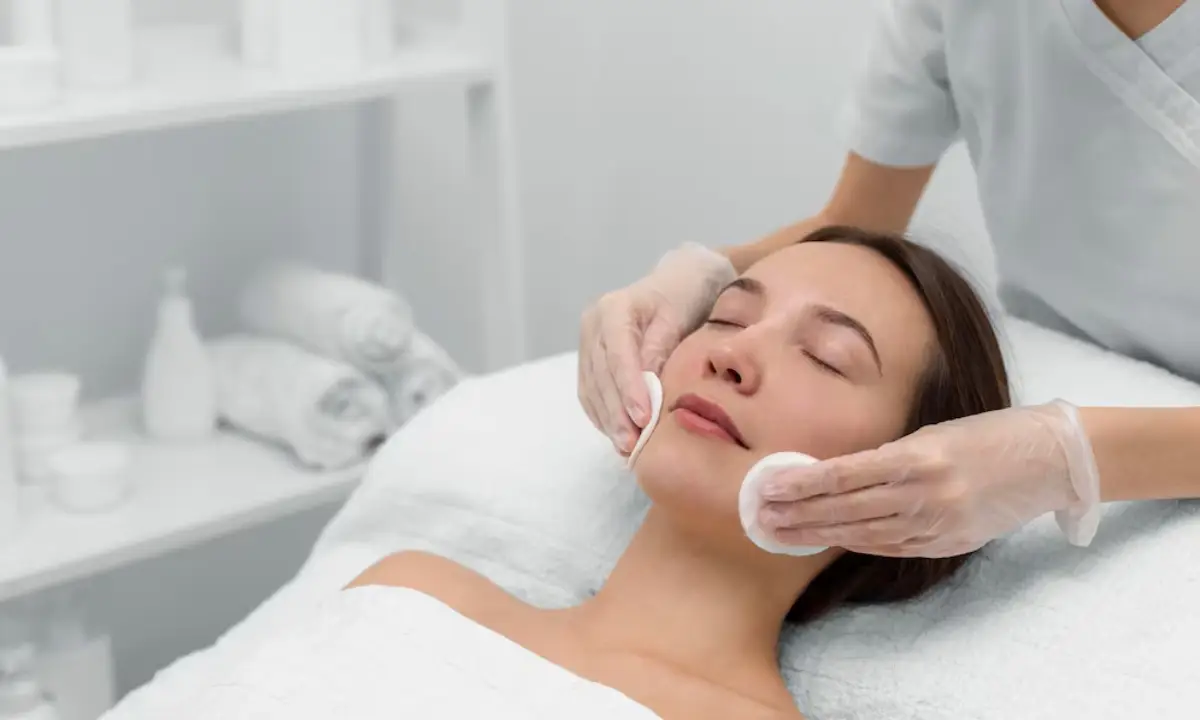Facial Fat Transfer Bali
Author: Administrator28/03/2024Fat Transfer in Bali for Natural Body Contouring
Experience the transformative power of fat transfer Bali, a safe and effective surgical procedure that uses your body’s own fat to enhance contours and restore balance.
Ideal for body contouring or facial fat grafting, this treatment adds volume naturally while minimizing risks such as blood clots, ensuring a smooth, long-lasting rejuvenation.
How Does Fat Transfer Treatment Work?
The fat transfer treatment is a safe and natural form of cosmetic surgery that enhances volume and improves body sculpting. It uses your own fat, a naturally occurring substance, to create smooth, lasting results. Here’s how this transformative procedure works:
1. Consultation and Preparation
Your healthcare professional will evaluate your goals and review your medical history to ensure safety. You may be asked to stop certain medications or herbal supplements before the procedure to minimize bleeding disorders or other risks.
2. Fat Harvesting
The process begins by extracting excess fat from donor areas like the abdomen, thighs, or flanks through gentle liposuction. This reconstructive surgery technique not only improves body sculpting but also contours the donor area for a balanced result.
3. Fat Processing and Purification
The harvested fat is purified to remove impurities and fluids, leaving only healthy fat cells. This step ensures the fat injections are clean, stable, and ready for precise application.
4. Fat Injection and Sculpting
Using microcannulas, the surgeon performs precise fat injection techniques to fill hollows, smooth lines, and enhance contours. The process helps destroy fat cells selectively in unwanted areas while improving blood flow and symmetry for natural results.
5. Post-Procedure Recovery
After treatment, mild swelling or moderate pain may occur, which can be managed with prescribed medication. Patients who have experienced significant weight loss or excess skin may require additional adjustments. Proper rest supports the body sculpting effect and smooth healing.
The Benefits of Fat Filler
The fat filler treatment offers a natural, long-lasting solution for restoring volume and balance. Performed under local anesthesia or mild sedation, it helps improve contour and rejuvenation with minimal downtime. Here’s how this versatile procedure benefits your appearance:
1. Natural and Long-Lasting Results
Because it uses your body’s own fat rather than a synthetic dermal filler, fat filler creates smooth, natural contours that blend seamlessly with surrounding tissue. This integration stimulates collagen production, enhancing firmness and vitality over time.
2. Low Risk and Safe Procedure
Since the fat comes from your own body, there’s minimal risk of rejection or allergic reaction. Conducted after a physical exam and review of medical conditions or certain medications, the treatment is safe and effective, with little risk of nerve injury or side effects.
3. Dual Benefit: Sculpt and Restore
This procedure combines rejuvenation with body contouring by harvesting fat from areas with extra skin or unwanted fullness. The local anesthetic or general anesthesia ensures comfort, while cool compress application post-treatment speeds up healing and reduces swelling.
4. Quick Recovery and Natural Healing
Patients typically enjoy a short recovery time and can return to light physical activity within days. With proper care, fat filler enhances volume, corrects volume loss, and provides lasting improvements without the need to require surgery.
5. Versatility and Customization
Fat filler can be tailored for multiple areas, the face, hands, buttocks, or breasts. When combined with platelet rich plasma, ultrasound waves, or other procedures, results are enhanced for smoother texture and a more youthful, radiant look.
6. Realistic, Long-Term Enhancement
Patients with realistic expectations find that fat filler delivers sustainable, natural beauty. It subtly refines features while minimizing extra skin, restoring harmony and proportion for a balanced, rejuvenated appearance.
Who Is a Good Candidate for Fat Transfer Treatment?
The fat transfer treatment is a safe and FDA approved option for those who wish to restore volume, enhance body shape, and achieve natural-looking rejuvenation. It’s ideal for individuals seeking subtle improvement without synthetic fillers. Here’s who benefits most:
1. Individuals Seeking Natural Volume Enhancement
Candidates who want to add volume to areas like the cheeks, buttocks, or nasolabial folds are ideal. The treatment uses your own fat to refine contours and restore smoothness across the treatment area, improving confidence and self esteem.
2. Healthy Adults with Stable Weight
Patients with a balanced diet and consistent body weight make excellent candidates. Maintaining stable fat levels ensures that the transferred fat integrates successfully for natural, long-lasting results.
3. Those with Adequate Donor Fat and Good Skin Elasticity
People with enough donor fat in areas such as the abdomen, thighs, or flanks are best suited. Good skin elasticity helps define and hold the new shape, creating smooth, natural contours after treatment.
4. Patients in Good General Health
Candidates should not have chronic illnesses or bleeding disorders. In some cases, a general anesthetic may be used for comfort, depending on the size of the treatment area or the amount of fat transferred.
5. Backed by Clinical Evidence
Multiple systematic review and meta analysis studies have confirmed the safety and success of this procedure. As a trusted method within modern cosmetic care, fat transfer provides proven results with minimal risk.
6. Ideal for Combined Enhancements
Those looking to further refine their appearance may complement this procedure with injectables like deoxycholic acid to contour specific zones or improve shape symmetry. The combined approach enhances harmony across all treated areas.
7. Committed to a Healthy Lifestyle Post-Treatment
Following a nutritious diet and proper aftercare routine supports fat survival and longevity. Candidates who stay active and maintain healthy habits experience optimal, long-lasting improvements to their shape and natural beauty.
Safety and Side Effects
The fat transfer treatment is a safe and effective cosmetic procedure performed under expert care. Using your own fat as filler, it’s one of the most natural and minimally invasive treatment options within plastic and reconstructive surgery. Here’s what you need to know about its safety and side effects:
1. Safe and FDA-Approved Procedure
As a trusted treatment option, fat transfer is widely used to fill volume loss and improve the appearance of deep wrinkles, scars, and hollow areas. It’s performed using sterile techniques to prevent infection and ensure optimal healing.
2. Mild and Temporary Side Effects
After the procedure, the target area may experience mild swelling, redness, or tenderness. These effects typically subside within a few days, especially when cold compresses are applied to reduce discomfort and inflammation.
3. Natural Integration of Injected Fat
The injected fat gradually integrates with surrounding tissue, resulting in natural and lasting desired results. It’s normal for a small portion of the fat to be reabsorbed during healing, but the remaining cells stay permanently in place.
4. Recovery and Aftercare
Patients are advised to avoid strenuous activities for at least one to two weeks to allow proper healing of both donor and target area. Resting adequately helps maintain the fat’s stability and achieve the desired result.
5. Personalized Treatment and Adjustments
Each patient’s response to the cosmetic procedure is unique. In some cases, additional sessions may be recommended to achieve desired results or enhance symmetry, making fat transfer one of the most adaptable treatment options available today.
6. Long-Term Improvement and Confidence Boost
When performed by skilled surgeons in plastic and reconstructive surgery, fat transfer not only refines contours but also helps improve the appearance of the skin. The result is smooth, natural enhancement that restores balance and confidence.
Disclaimer
- Treatment results may vary for each individual, depending on skin condition, medical history, lifestyle, and various other factors.
- All “before & after” photos shown are illustrative examples and do not guarantee identical results for every patient.
- The information provided on this website is intended for general educational purposes only and should not be considered a substitute for professional medical consultation. Please consult directly with a licensed doctor or medical professional at our clinic for an accurate diagnosis and personalized treatment recommendations.










.webp)
.webp)












